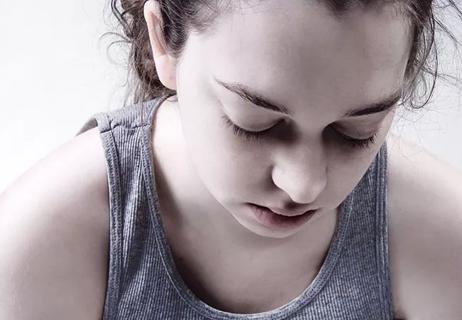Advertisement
How to care for teens struggling with sexual or gender identity
Depression and anxiety are risks for any adolescent, but especially those who identify as lesbian, gay, bisexual, transgender, queer or other (LGBTQ+). Those teens may face additional challenges because of the complexity of the coming-out process, as well as societal discrimination against sexual and gender minorities.
Advertisement
Cleveland Clinic is a non-profit academic medical center. Advertising on our site helps support our mission. We do not endorse non-Cleveland Clinic products or services. Policy
LGBTQ+ youth also are at higher risk for suicidality, eating disorders and substance abuse, says Jason Lambrese, MD, a child and adolescent psychiatrist with Cleveland Clinic’s Center for Behavioral Health.
In the newest episode of Cleveland Clinic’s Neuro Pathways podcast, Dr. Lambrese discusses how to provide quality care for LGBTQ+ youth. He touches on:
Click the podcast player above to listen to the 27-minute episode now, or read on for a couple of short edited excerpts. Check out more Neuro Pathways episodes at clevelandclinic.org/neuropodcast or wherever you get your podcasts.
Dr. Lambrese: It’s hard on the part of the provider and the part of the patient to initiate the conversation about struggling with gender and sexuality or identifying as LGBTQ+. There was a study —now it’s over 10 years old — that asked pediatricians how often they were talking to youth about sexual orientation. Maybe about a third of pediatricians at that point said they would initiate the conversation with their patients, but others said, “I don’t know how to bring it up. I don’t know what to do if they say yes. I don’t know the resources that are out there.”
Youth were asked the same thing: How often are you coming out to your provider? Two-thirds wanted to come out, but only a third did. And the No. 1 reason the extra third didn’t come out was that the doctor never asked them.
Advertisement
So, patients see that the onus is on us as providers to start these conversations.
I think a huge barrier is provider comfort in bringing this up, like any sensitive topic. … We need to give providers the tools to allow them to feel more comfortable just opening the door, to allow this conversation to happen.
************************************************************************************
Dr. Lambrese: When patients walk into the waiting room, are they seeing any visible signs of LGBTQ+ support? That could be a little safe zone sticker, a rainbow flag or a flyer for the local LGBT community center. Folks will pick up on these small things.
When they sit down and fill out the intake form, how are the questions asked? Is there only an M and an F option for somebody’s gender? Or can there be a gender with a line or multiple options to pick from? For kids, when it asks for contact info for mom and dad, instead of “mom and dad” can it say “parent 1 and parent 2,” to allow for folks who may have two moms, two dads or only one or the other? How can we make sure that it’s more than just single, married or divorced?
We want to make sure that all of our staff feel competent in this area as well. When the nurse comes out to the waiting room to room the patient, they should use the patient’s preferred name. People pick up on those small representations of support that allow them from the start to feel more comfortable walking into the office.
Advertisement
Advertisement

Comprehensive treatment harnesses power of pharmacologic and behavioral therapies

Using multidisciplinary care to address mood changes, mitigate daily stressors

Helping patients, families navigate the complexities of psychosis

Virtual care, shared appointments and a team-based approach help expand access

Depression, substance abuse and more may emerge in adulthood

Dr. Amit Anand shares his journey from a 1990s discovery to an ongoing randomized trial

Transgender patients’ brains resemble those of their identified gender, not biological gender

Citywide program emphasizes psychosocial, pharmacologic and psychotherapeutic approaches to addiction